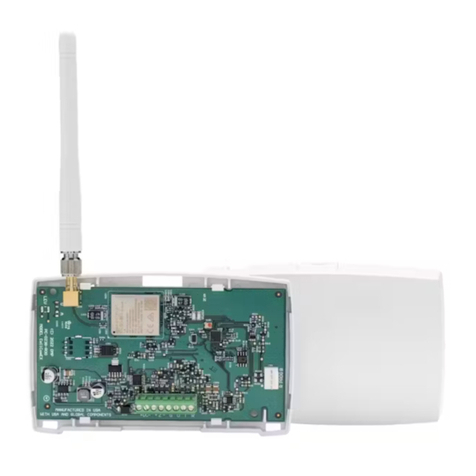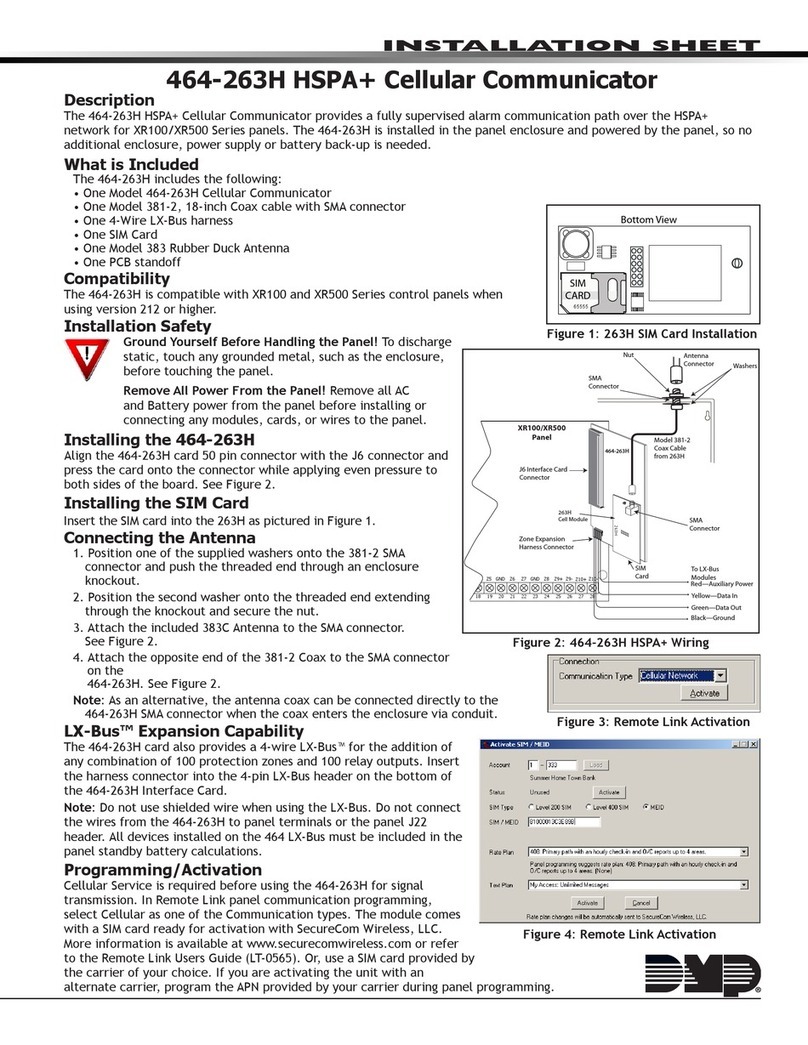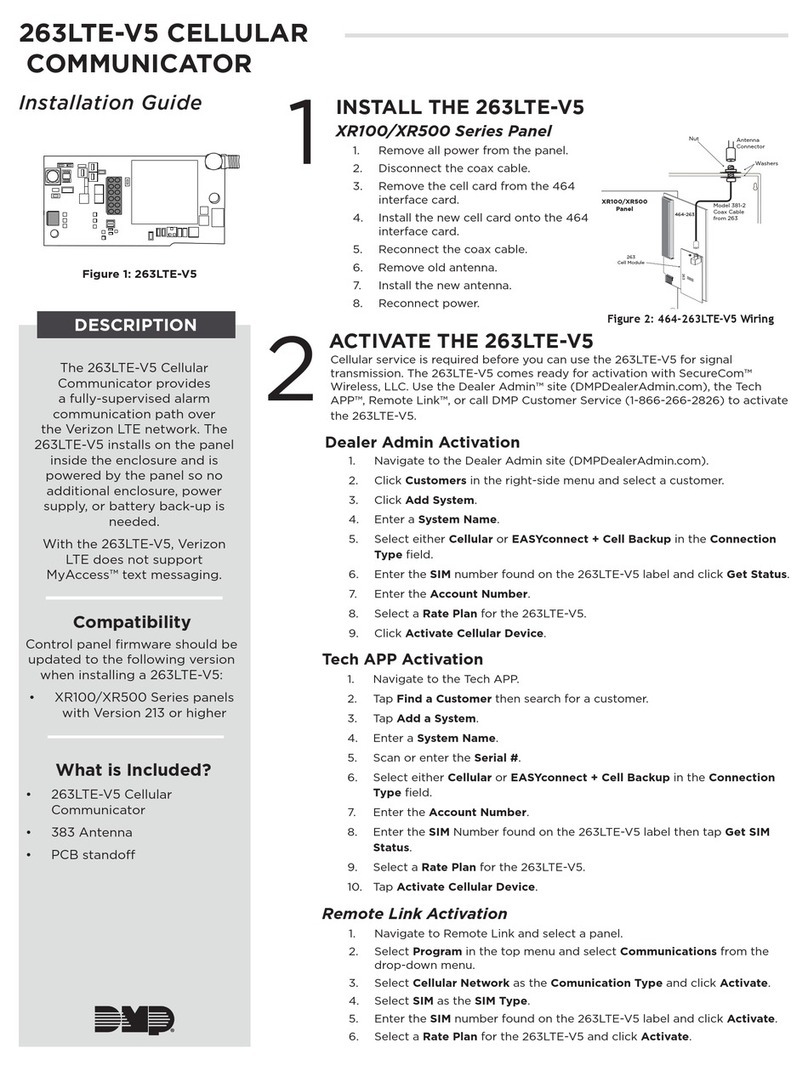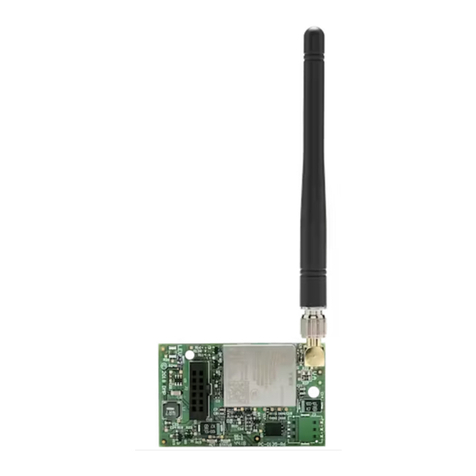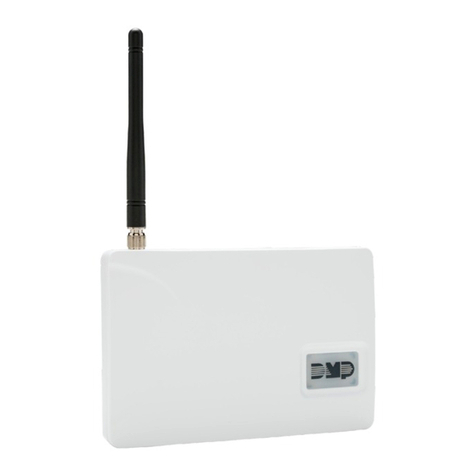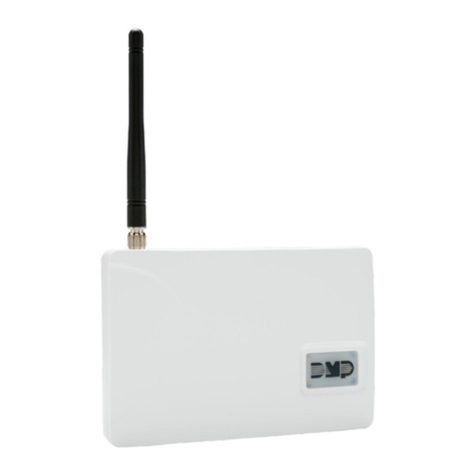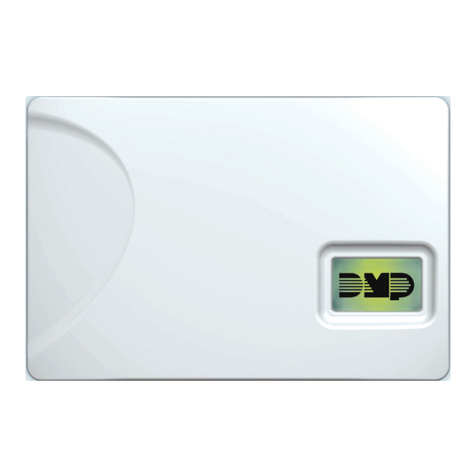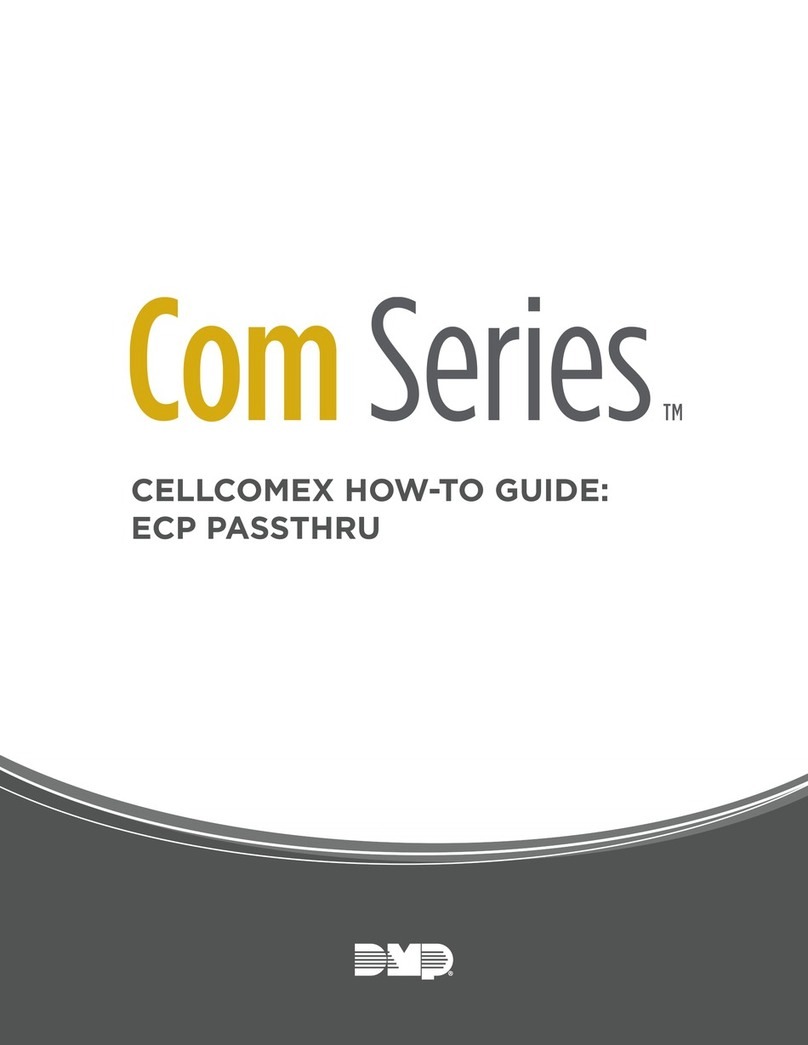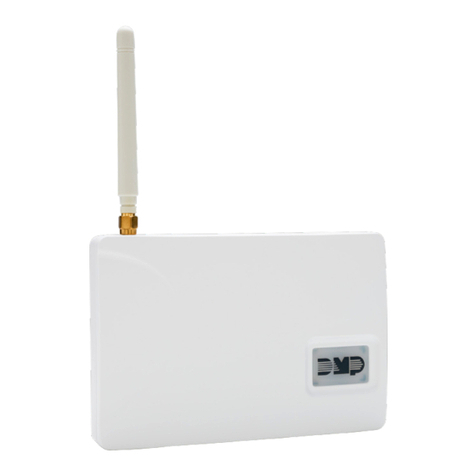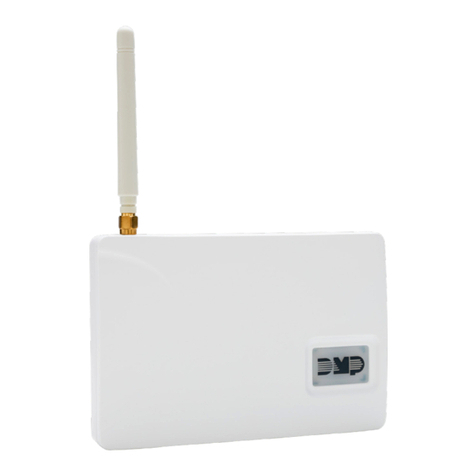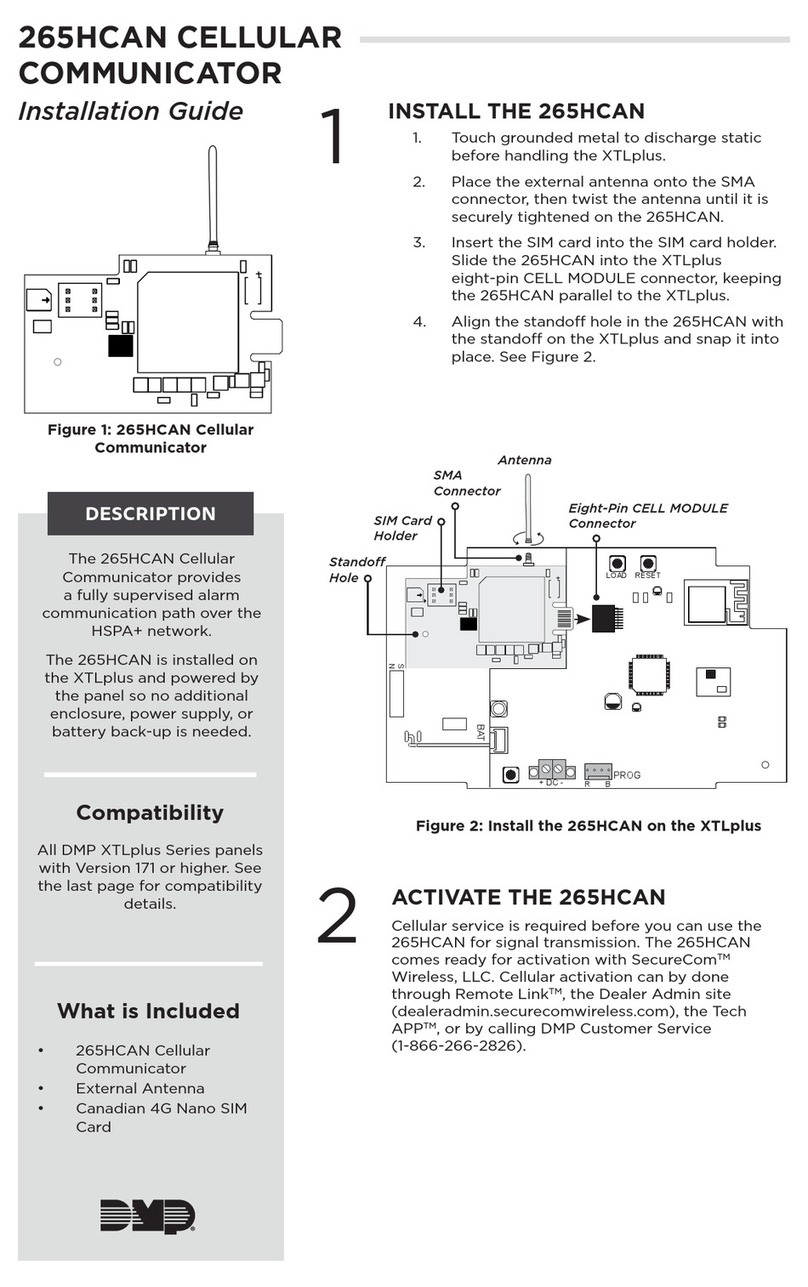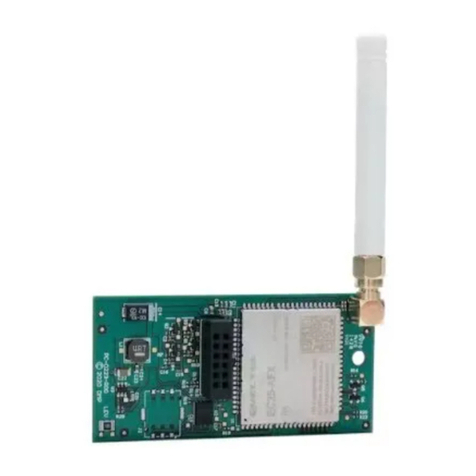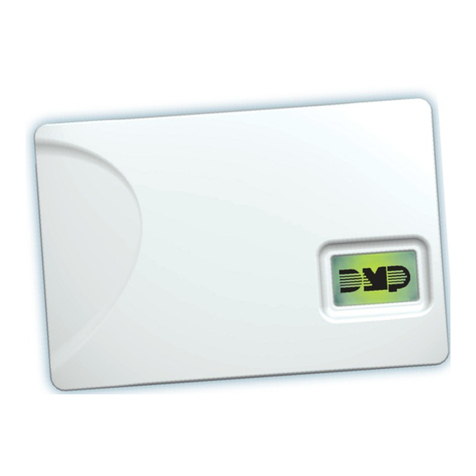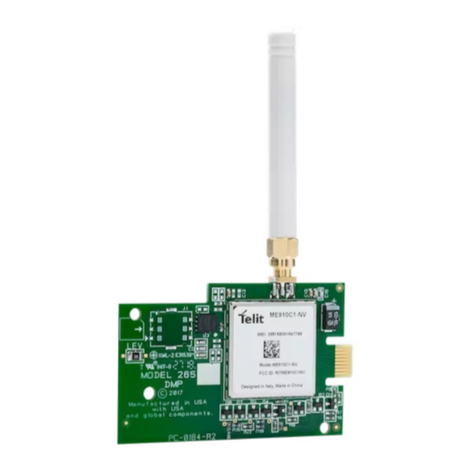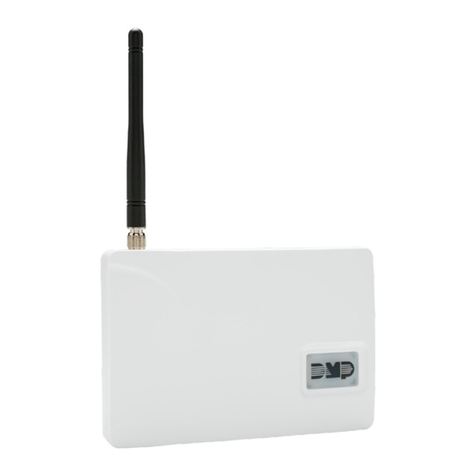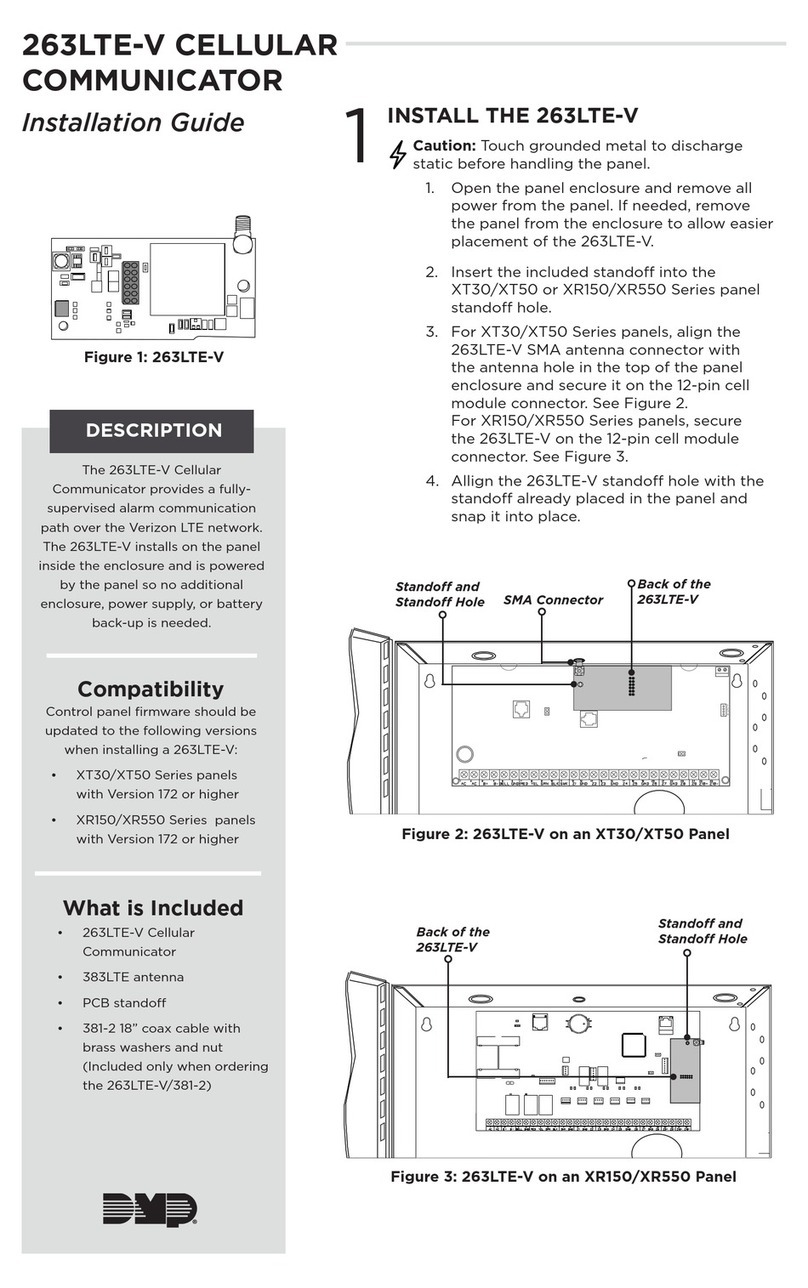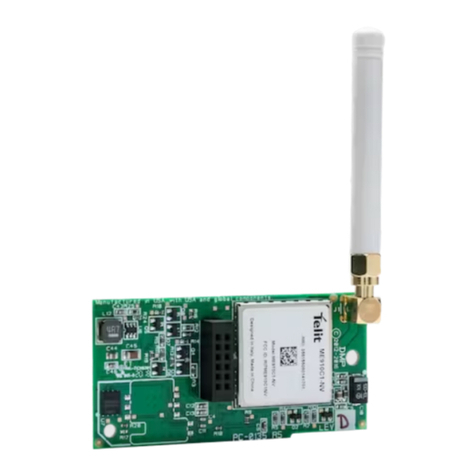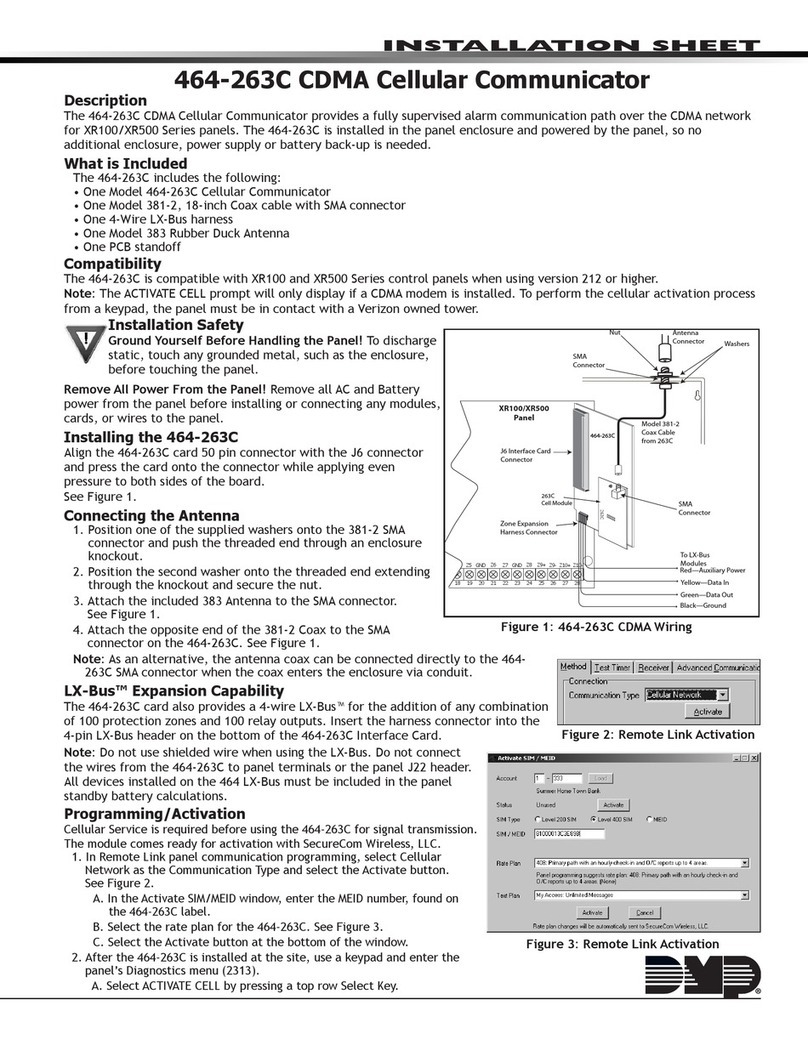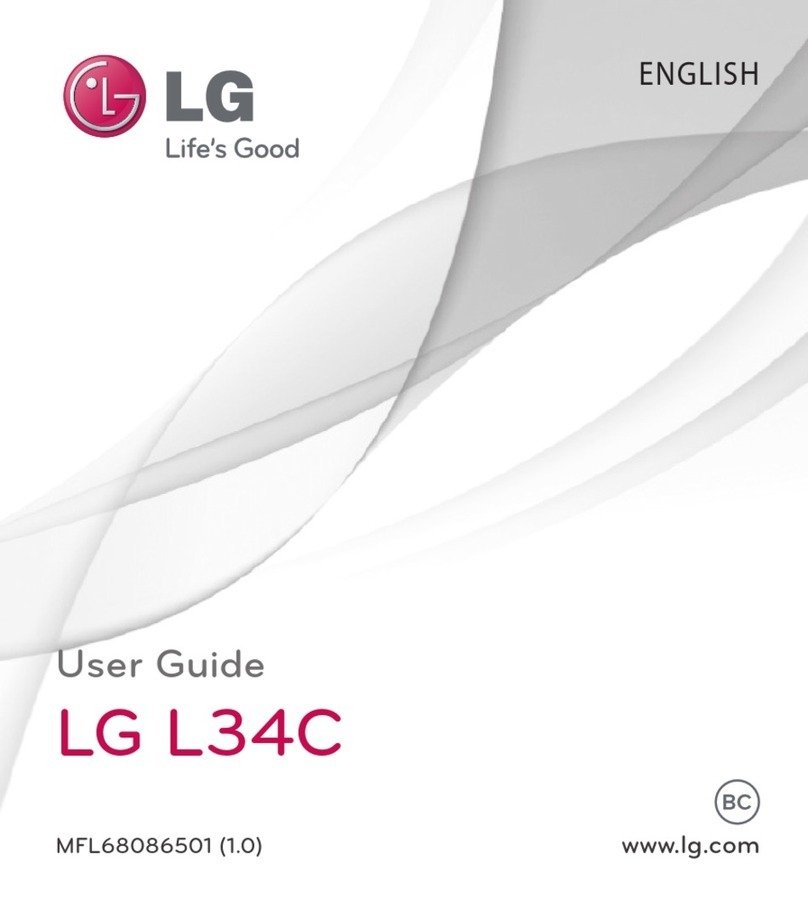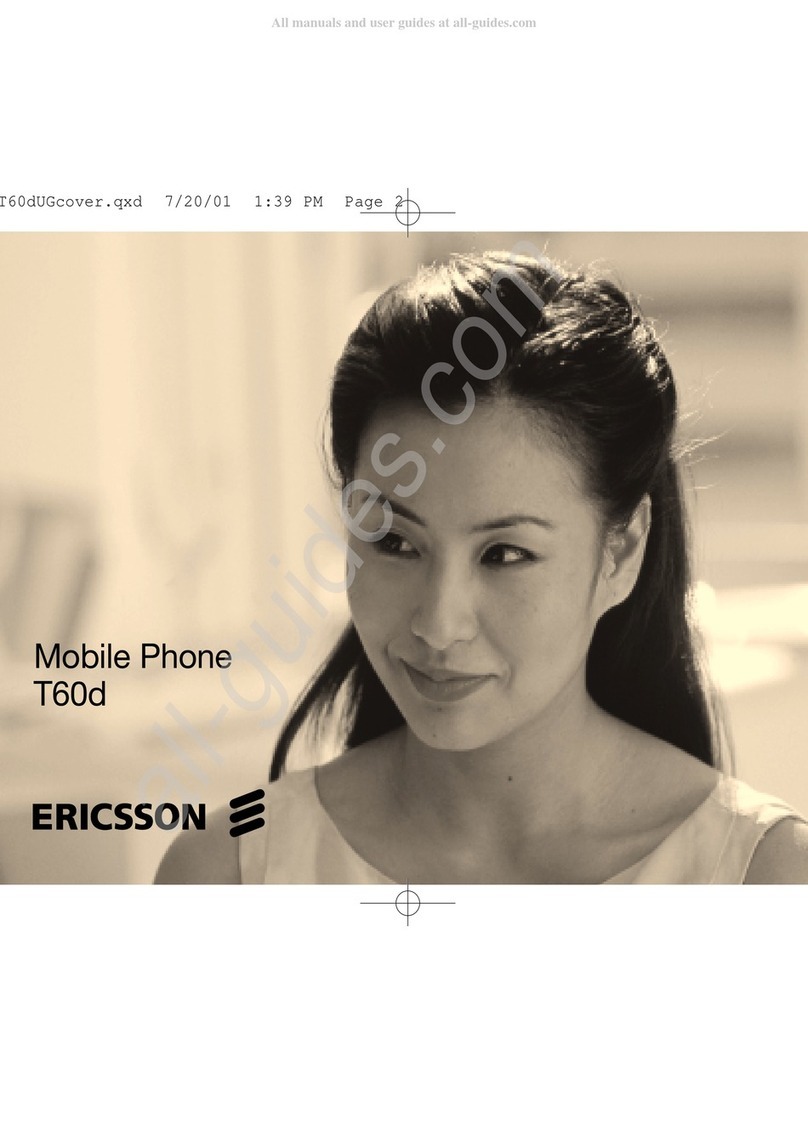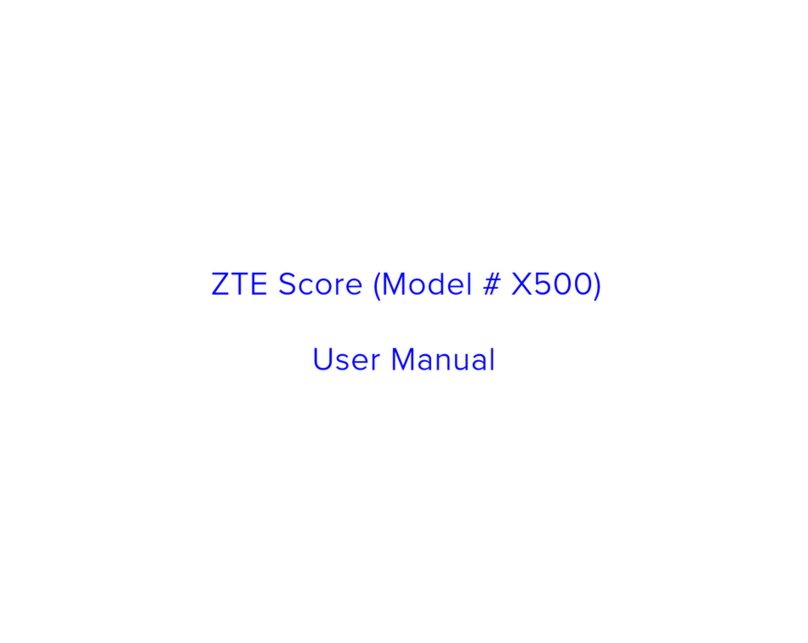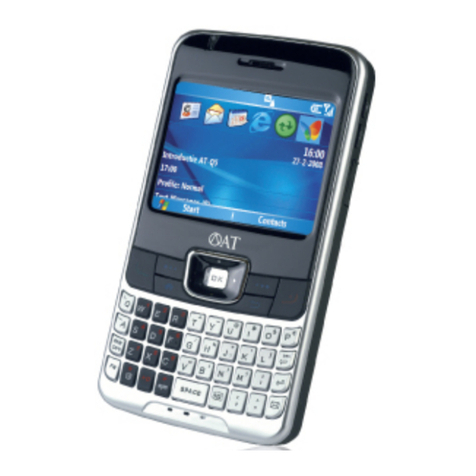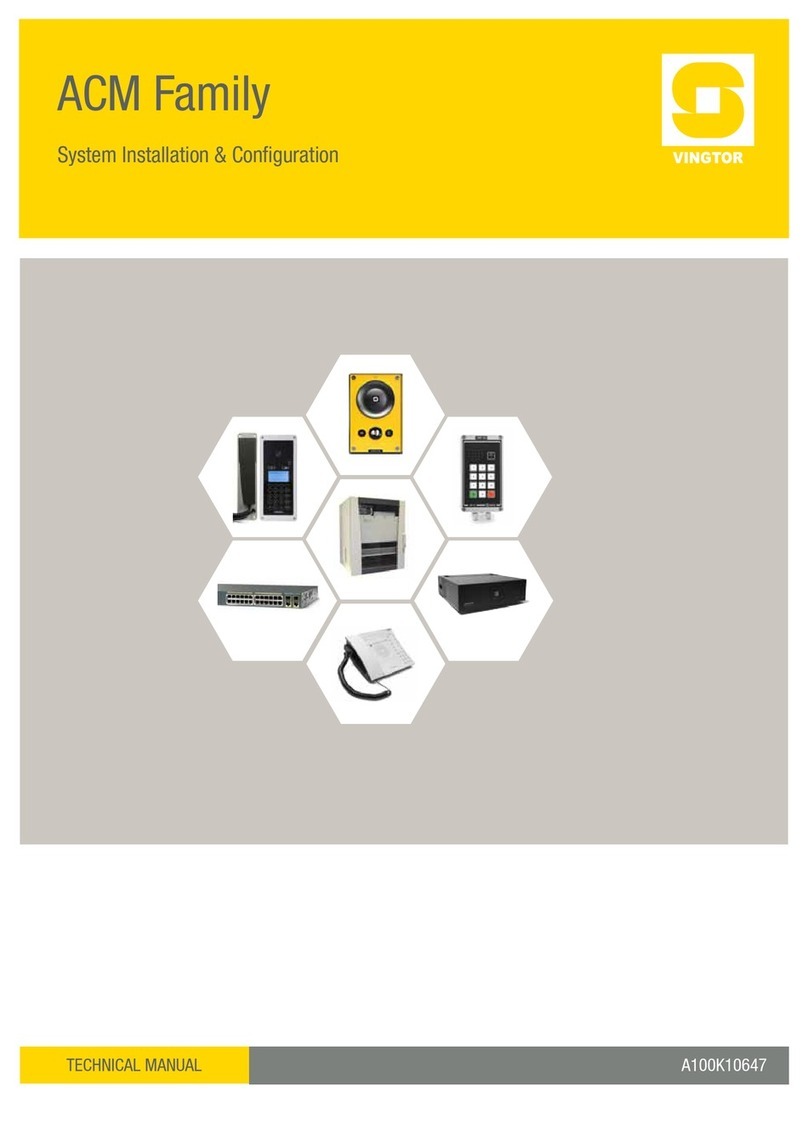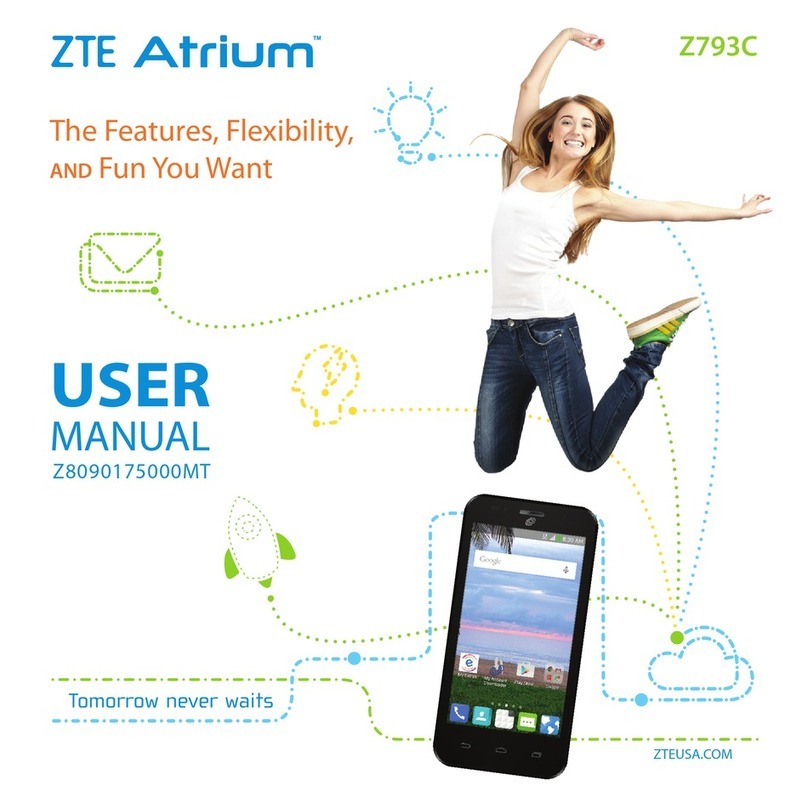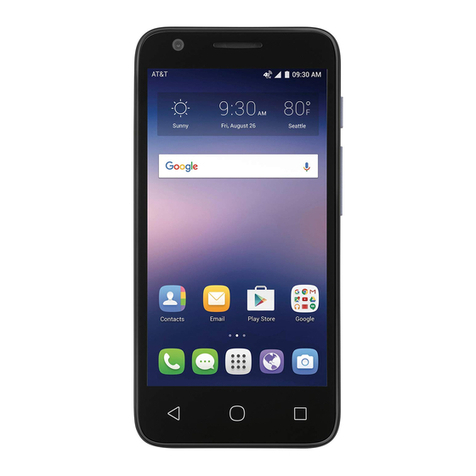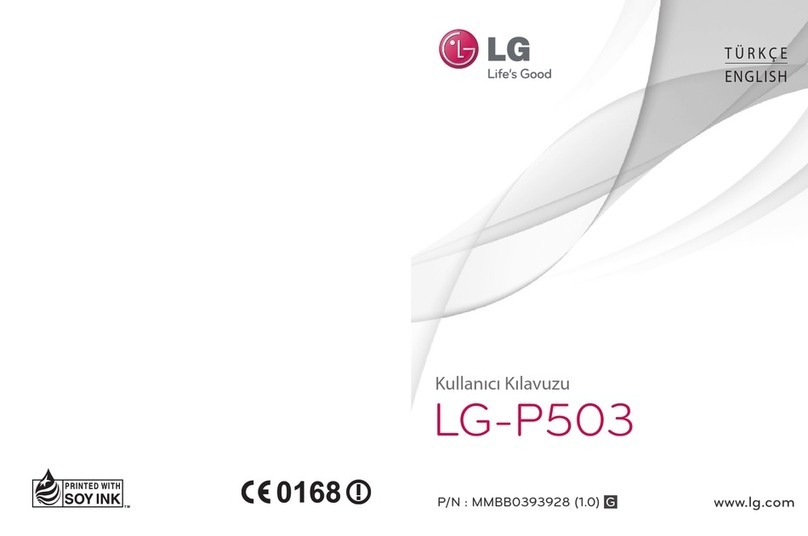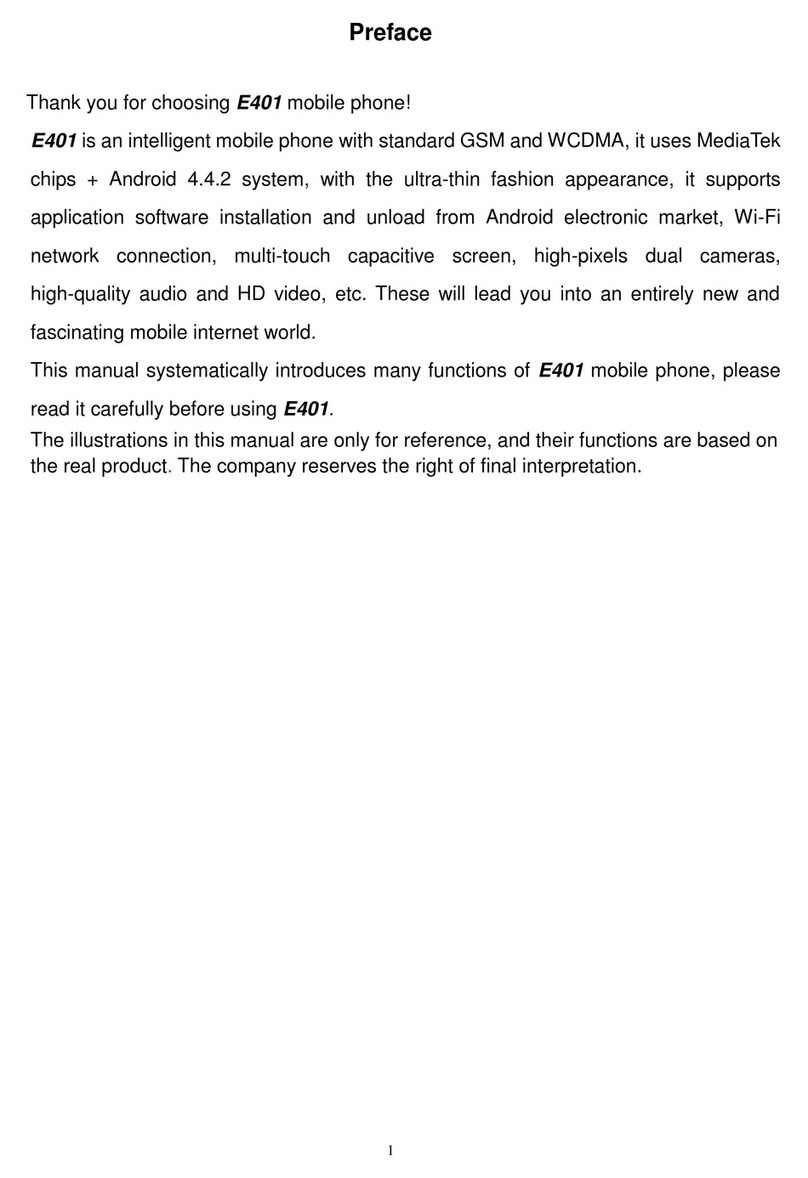
LT-1399 1.01 © 2015 Digital Monitoring Products, Inc.
2500 North Partnership Boulevard
800-641-4282
www.dmp.com
15305
Programming/Activation
Cellular Service is required before using the 263CSMX for signal transmission. The
263CSMX comes ready for activation with SecureCom Wireless, LLC.
1. In Remote Link panel communication programming, select Cellular Network as the
Communication Type and select the Activate button. See Figure 4.
A.
In the Activate SIM/MEID window, enter the MEID number, found on the 263CSMX
label.
B. Select the rate plan for the 263CSMX. See Figure 5.
C. Select the Activate button at the bottom of the window.
2. After the 263CSMX is installed at the site, use a keypad and enter the
panel's Diagnostics menu (2313).
A. Select ACTIVATE CELL by pressing a top row Select Key.
B. Press the button beneath YES on the next screen to activate the
device.
Note: The ACTIVATE CELL prompt will only display if a CDMA modem
is installed. To perform the cellular activation process from a
keypad, the panel must be in contact with a Verizon owned tower.
Diagnostics
The panels provide a Diagnostics function to test the Communication
integrity and Cellular Signal strength of the 263CSMX. To use Diagnostics,
reset the panel, enter the Diagnostics code 2313 (DIAG), and press
COMMAND.
Communication Status
Select COMM STATUS from the Diagnostics menu. The panel tests the 263CSMX for the following items.
• 263C Installed • Cellular Tower Detected • 263C Registered • Communication Path Integrity
• 263C Operating • Connect Success • 263C Identied
Cellular Signal
Select CELL SIGNAL from the Diagnostics menu. The panel tests and indicates the strength of the signal using a bar display. One
bar indicates a weak signal and seven bars indicate a strong signal. The signal strength is displayed as a -dBm value.
Note: XT Series panels display ROAM in addition to the signal strength if the communicator is not in contact with a Verizon
owned tower.
FCC Information
This device complies with Part 15 of the FCC Rules. Afx the included FCC label to the exterior of the panel enclosure in plain sight. Operation is
subject to the following two conditions:
(1) This device may not cause harmful interference, and
(2) this device must accept any interference received, including interference that may cause undesired operation.
Changes or modications made by the user and not expressly approved by the party responsible for compliance could void the user’s authority to
operate the equipment.
NOTE: This equipment has been tested and found to comply with the limits for a Class B digital device, pursuant to part 15 of the FCC Rules.
These limits are designed to provide reasonable protection against harmful interference in a residential installation. This equipment generates,
uses and can radiate radio frequency energy and, if not installed and used in accordance with the instructions, may cause harmful interference to
radio communications. However, there is no guarantee that interference will not occur in a particular installation. If this equipment does cause
harmful interference to radio or television reception, which can be determined by turning the equipment off and on, the user is encouraged to
try to correct the interference by one or more of the following measures:
- Reorient or relocate the receiving antenna.
- Increase the separation between the equipment and receiver.
- Connect the equipment into an outlet on a circuit different from that to which the receiver is connected.
- Consult the dealer or an experienced radio/TV technician for help.
Figure 5: Remote Link Activation
Figure 4: Remote Link Activation
Specications
Primary Power 12 VDC from panel
Current Draw
Standby 13mA
Alarm 13mA
Compatibility
XT30/XT50 Series panels
XR150/XR350/XR550 Series panels
Accessories
381-2 18" Coax Cable (included)
381-12 12' Coax Extension
381-25 25' Coax Extension
383 Rubber Duck Antenna (included)
386 Outdoor Antenna Mounting Bracket
Ordering Information
263CSMX/381-2 Cellular Communicator with 18"
Coax Cable
Certications
California State Fire Marshall (CSFM)
Cellular FCC Part 15: MIVCNN0301
Cellular Industry Canada: 4160A-CNN0301
ANSI/UL 294 Access Control System Units
ANSI/UL 636 Holdup Alarm Units and System Accessory
ANSI/UL 1023 Household Burglar
ANSI/UL 1076 Proprietary Burglar
ANSI/UL 1610 Central Station Burglar
ANSI/UL 1635 Digital Burglar
ANSI/UL 985 Household Fire Warning
ANSI/UL 864 Fire Protective Signaling 9th Edition.
ANSI/UL365 Police Sta. Connected Burg Alarm Units & Systems
ANSI/UL609 Local Burg Alarm Units & Systems
